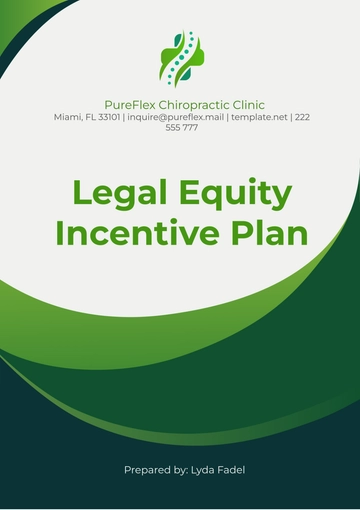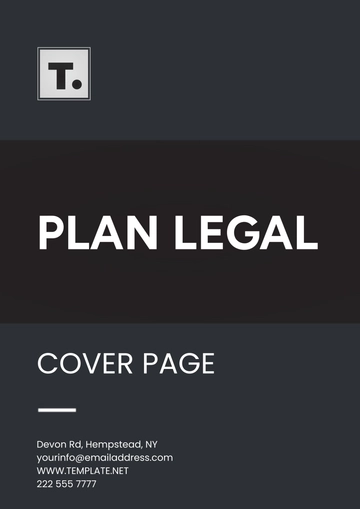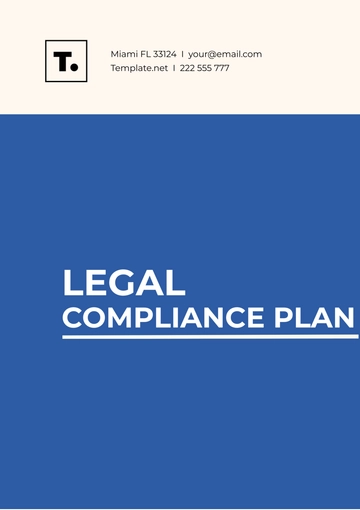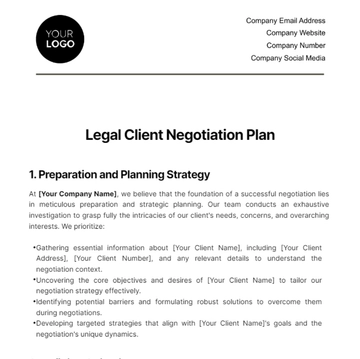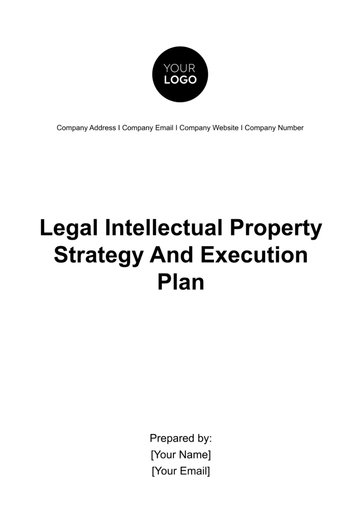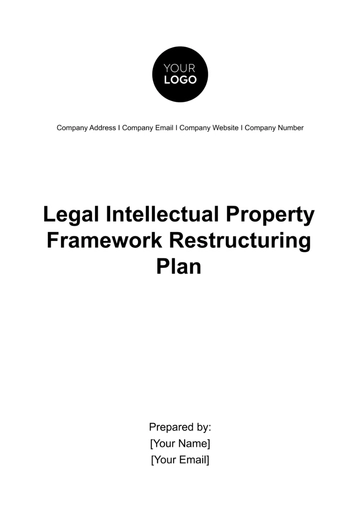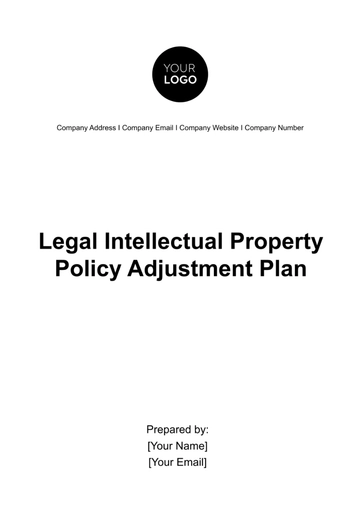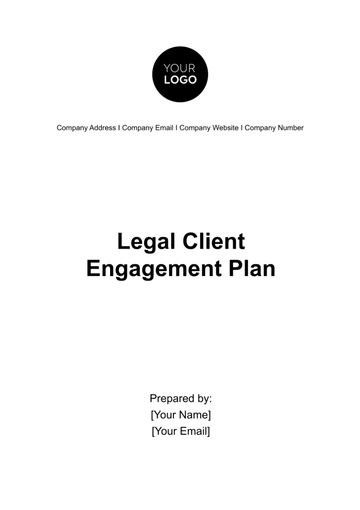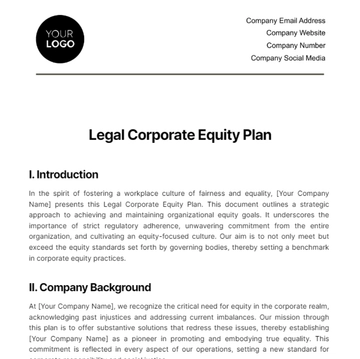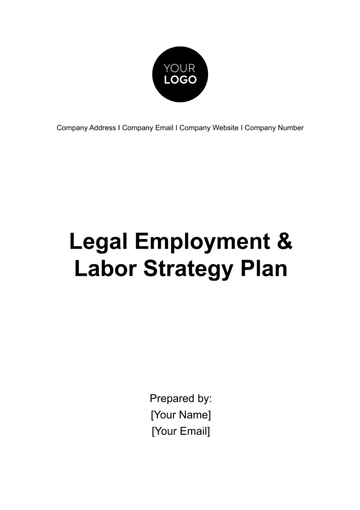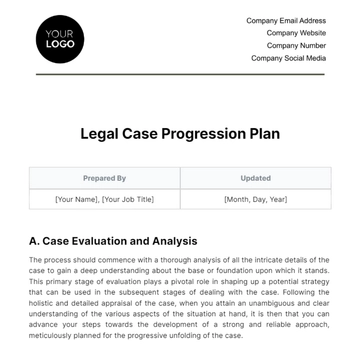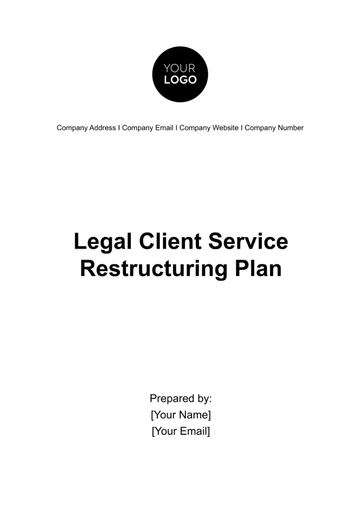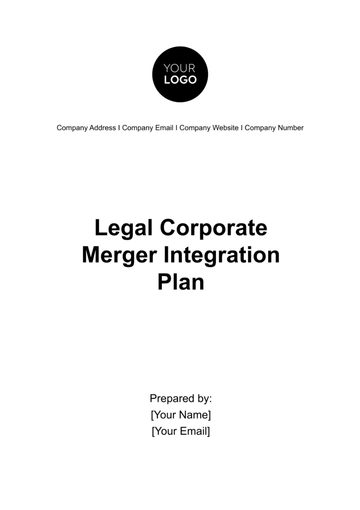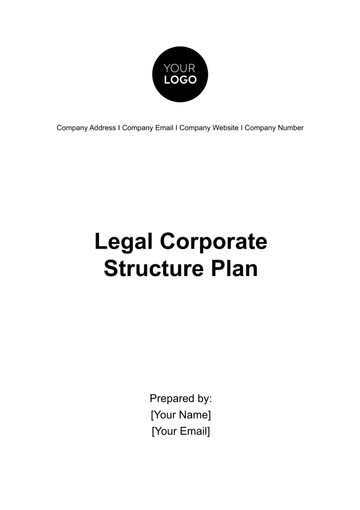Free Strategic Legal Employment & Labor Workforce Plan
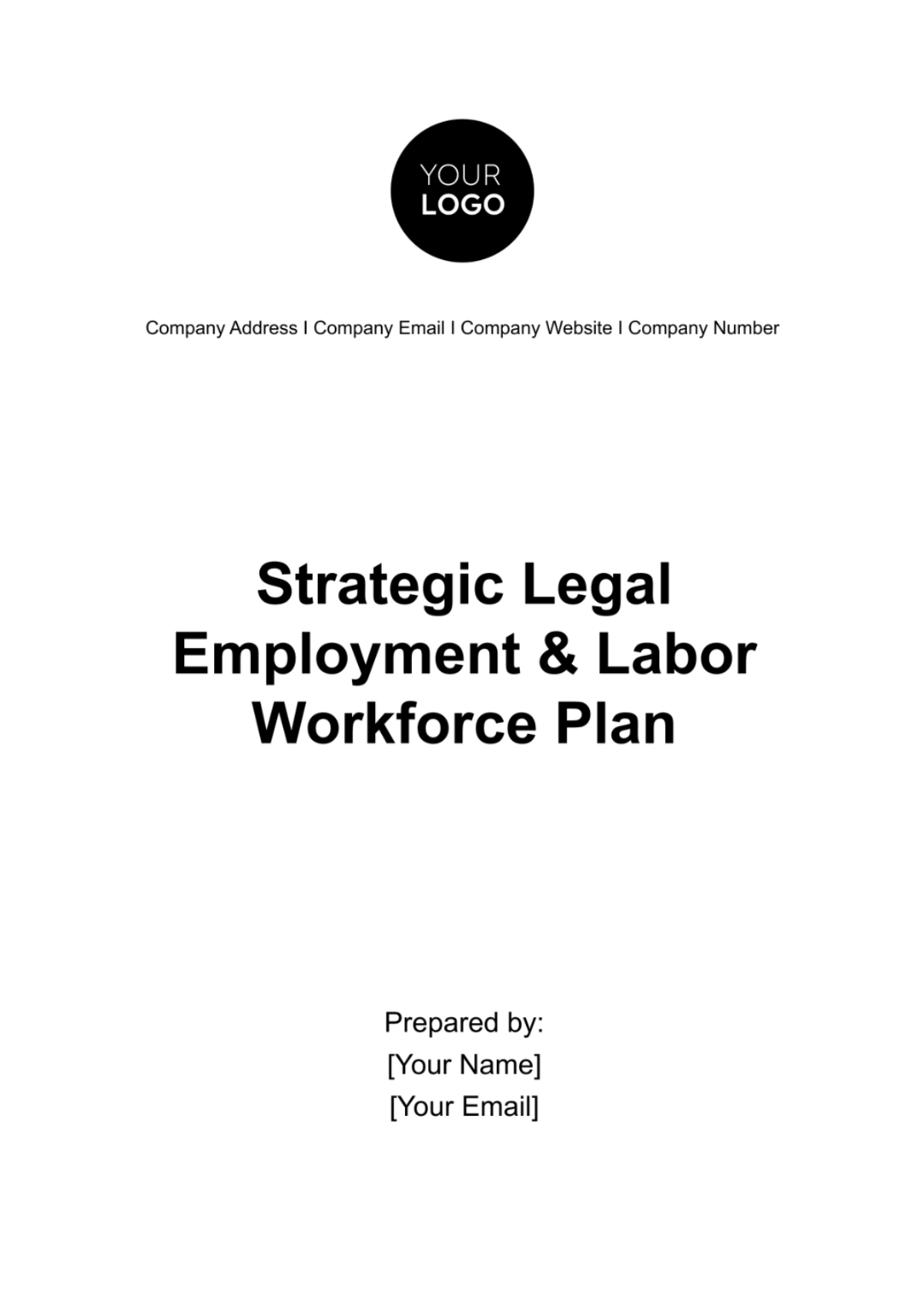
I. Introduction
A. Overview of the Organization
[Your Company Name] is a globally recognized leader in the technical sector, employing over [00] skilled professionals across [Jurisdiction]. Our commitment to excellence extends beyond delivering quality products/services; it encompasses fostering a diverse and inclusive workplace culture that values the contributions of every employee.
B. Purpose and Objectives
The primary aim of this Strategic Legal Employment & Labor Workforce Plan is to align our workforce management practices with legal requirements while promoting a positive work environment. Our objectives include ensuring equitable treatment of employees, mitigating legal risks, and optimizing workforce effectiveness to drive organizational success.
C. Importance of Legal Compliance
Legal compliance is foundational to our operations, ensuring fairness, accountability, and ethical conduct in all employee-related matters. By prioritizing legal compliance, we safeguard our employees' rights, maintain our reputation as a responsible employer, and mitigate the potential for costly legal disputes.
II. Legal Framework Analysis
A. Overview of Relevant Laws
Our workforce management practices are governed by a comprehensive set of federal, state, and local laws, including anti-discrimination statutes, wage and hour regulations, and workplace safety standards. The table below provides an overview of key laws impacting our organization:
Law | Description |
|---|---|
Title VII of the Civil Rights Act of 1964 | Prohibits discrimination based on race, color, religion, sex, or national origin. |
Fair Labor Standards Act (FLSA) | Establishes minimum wage, overtime pay, recordkeeping, and youth employment standards. |
Americans with Disabilities Act (ADA) | Prohibits discrimination against individuals with disabilities and requires reasonable accommodation. |
Family and Medical Leave Act (FMLA) | Provides eligible employees with unpaid, job-protected leave for specific family and medical reasons. |
Equal Pay Act | Requires equal pay for equal work regardless of gender. |
B. Analysis of Key Legal Requirements
Our analysis of key legal requirements focuses on areas such as non-discrimination, wage and hour compliance, workplace safety, and employee leave entitlements. By understanding and adhering to these requirements, we minimize the risk of legal disputes and ensure a fair and lawful workplace environment.
C. Identification of Legal Risks
Through comprehensive risk assessments, we have identified potential legal risks associated with workforce management, including discrimination claims, wage and hour violations, and inadequate documentation practices. By proactively addressing these risks, we mitigate liabilities and promote compliance with legal obligations.
III. Recruitment and Hiring
A. Recruitment Strategies
Our recruitment strategies prioritize diversity and inclusivity, leveraging targeted outreach efforts, partnerships with community organizations, and innovative sourcing techniques to attract a diverse pool of qualified candidates. By embracing diversity in our recruitment efforts, we enrich our talent pool and foster a culture of inclusion.
B. Hiring Procedures
Our hiring procedures are designed to ensure fairness and transparency in the selection process, incorporating standardized interview protocols, objective evaluation criteria, and thorough background checks. Through consistent and equitable hiring practices, we uphold our commitment to equal employment opportunity and merit-based selection.
C. Onboarding Processes
Our onboarding processes provide new employees with essential information and resources to navigate their roles effectively and understand their rights and responsibilities. By facilitating a smooth transition into the organization, we foster engagement, reduce turnover, and promote compliance with legal obligations from day one.
IV. Employee Relations
A. Policies and Procedures
Our employee relations policies and procedures promote a culture of respect, fairness, and open communication, establishing clear expectations for behavior and outlining processes for addressing concerns or grievances. By providing employees with accessible channels for feedback and support, we cultivate a positive work environment conducive to productivity and collaboration.
B. Grievance Handling
We are committed to addressing employee grievances promptly and impartially, offering multiple avenues for resolution, including informal mediation and formal grievance procedures. By prioritizing fairness and transparency in grievance handling, we demonstrate our commitment to upholding employee rights and maintaining trust in the workplace.
C. Anti-Harassment Training
All employees receive regular training on our anti-harassment policies and procedures to prevent and address workplace harassment effectively. Through interactive training sessions and scenario-based learning, we empower employees to recognize, report, and intervene in instances of harassment, fostering a culture of accountability and respect.
V. Compensation and Benefits
A. Compensation Structure
Our compensation structure is designed to attract and retain top talent while ensuring compliance with minimum wage and overtime regulations. By conducting regular market analyses and benchmarking studies, we strive to offer competitive compensation packages that reward performance and align with organizational goals.
B. Benefits Administration
We offer a comprehensive benefits package, including health insurance, retirement plans, and paid time off, administered in accordance with applicable laws and regulations. Through transparent communication and personalized benefits counseling, we empower employees to make informed decisions about their health and financial well-being.
C. Pay Equity
We are committed to pay equity and conduct regular analyses to identify and address any disparities based on gender, race, or other protected characteristics. By promoting transparency in our compensation practices and proactively addressing pay gaps, we foster trust, fairness, and equity in our workforce.
VI. Training and Development
A. Skills Training
Our skills training programs are tailored to meet the evolving needs of our workforce, offering a blend of classroom instruction, online learning modules, and hands-on workshops. By investing in employee development, we enhance performance, drive innovation, and strengthen our competitive advantage in the marketplace.
B. Compliance Training
All employees receive comprehensive compliance training to ensure awareness of legal requirements and organizational policies. Through interactive e-learning modules, live webinars, and in-person workshops, we equip employees with the knowledge and skills needed to uphold legal standards and promote a culture of integrity and ethics.
C. Succession Planning
Our succession planning initiatives identify high-potential employees and provide them with targeted development opportunities to prepare for future leadership roles. By cultivating a pipeline of talent from within, we minimize disruptions, retain institutional knowledge, and sustain organizational excellence over the long term.
VII. Legal Compliance Monitoring
A. Audits and Reviews
We conduct regular audits and reviews of our workforce management practices to ensure compliance with legal requirements and identify areas for improvement. By engaging internal and external auditors, we maintain accountability, transparency, and continuous improvement in our compliance efforts.
B. Recordkeeping Practices
Our recordkeeping practices adhere to best practices and legal standards, ensuring accuracy, accessibility, and confidentiality of employee-related information. By maintaining comprehensive records of employment actions, training activities, and compliance efforts, we demonstrate diligence and accountability in meeting legal obligations.
C. Corrective Actions
If compliance deficiencies are identified, we take prompt corrective actions to address them, including policy revisions, additional training, and process improvements. By addressing root causes and implementing preventive measures, we minimize the risk of recurrence and strengthen our overall compliance posture.
VIII. Risk Management
A. Risk Mitigation Strategies
We implement proactive risk mitigation strategies, such as policy reviews, employee training, and legal consultations, to minimize legal risks and liabilities. By staying abreast of legal developments and industry trends, we anticipate potential risks and take preemptive measures to safeguard our organization's interests.
B. Contingency Planning
In the event of legal disputes or regulatory actions, we have contingency plans in place to respond swiftly and effectively, including engaging legal counsel, conducting internal investigations, and implementing remedial measures. By maintaining readiness and resilience, we mitigate disruptions and protect our organization's reputation and resources.
IX. Workforce Planning
A. Forecasting Future Needs
As a forward-thinking and proactive organization, we always strive to anticipate the needs of our future workforce through meticulously comprehensive strategies and efforts focused on workforce planning. Various factors come into play when orchestrating such planning, including projections pertaining to the growth of our business, the available talent pool and its potential, as well as overall demographic trends that shape the employment landscape. To establish the best footing for our organization, we strategically align our efforts in workforce planning with our broader objectives that are oriented towards growth and progression. This alignment proves to be instrumental in equipping our organization with the capabilities to not only meet the ever-evolving demands of our business but also to seize emerging opportunities that present themselves in the contours of the fast-paced business world.
Through this long-term and integrated approach, we essentially build a productive bridge between the present and the future, ensuring that our organization is constantly prepared and primed to tap into prospective developments and trends. We believe that this strategic anticipation and readiness for future workforce needs is instrumental in securing our organization's advancement and success.
B. Succession Planning
Our organization has implemented several succession planning initiatives designed to identify and develop potential leaders from within our own ranks. A significant part of these initiatives involves providing these high-potential individuals with targeted opportunities for development and comprehensive mentorship support. This deliberate and meticulous cultivation of talent creates a robust pipeline that ensures there is always a steady supply of capable individuals ready to step in as needed. In this manner, we can effectively minimize succession risks that could destabilize our leadership structure.
By maintaining continuity in leadership, we promote and drive the resilience and sustainability of our organization. This is crucial in ensuring that we have the ability to withstand and adapt to any challenges or changes, allowing us to continue to function efficiently and effectively.
X. Implementation and Evaluation
A. Timeline for Implementation
Our team has painstakingly constructed a comprehensive timeline for the execution of various components that make up our plan. This timeline serves as a blueprint, meticulously outlining pivotal milestones plus the respective deadlines that correspond to each of them. The purpose behind this is to guide us in taking appropriate action. By strictly adhering to this carefully thought-out timeline, we are able to guarantee that all initiatives are executed in a timely manner. Moreover, this adherence to deadlines helps us maintain a consistent level of momentum which is crucial in ensuring we make steady progress towards achieving our strategic goals and objectives.
B. Key Performance Indicators (KPIs)
To measure the effectiveness of the plan, we have identified key performance indicators (KPIs) aligned with our objectives, such as:
Percentage of workforce trained on legal compliance requirements
Employee satisfaction scores related to workplace culture and fairness
Number of legal disputes or compliance violations reported and resolved
By tracking these KPIs regularly, we can assess progress, identify areas for improvement, and make data-driven decisions to optimize our workforce management practices.
C. Regular Evaluation and Review
We have established processes for regular evaluation and review of the plan's implementation, including:
Quarterly assessments of compliance with legal requirements
Annual reviews of workforce effectiveness and employee engagement
Biennial audits of policies, procedures, and recordkeeping practices
Through ongoing evaluation and review, we remain agile and responsive to changing legal, regulatory, and business environments, ensuring the plan remains relevant and effective over time.
XI. Conclusion
A. Summary of Key Points
As a summary, this Strategic Legal Employment & Labor Workforce Plan is a document in which we express our commitment to adhere to legal compliance, ensure fairness, and strive for excellence in the area of workforce management. The alignment of our practices with the legal mandates serves as a tangible testament to this commitment. Alongside this, our concerted efforts towards fostering a positive culture within our workplace, promotes unity and respect amongst each of our employees.
Additionally, our significant investment in the development of our employees assists in their personal and professional growth. As a result of these initiatives, we are positioning ourselves to achieve sustained success and continuous growth in our industry.
B. Commitment to Ongoing Improvement
Our passion and dedication are firmly rooted towards ceaseless enhancement in our methods of managing our workforce. Our operation standards to conduct these practices are guided by the trio of core values we ardently uphold - integrity, accountability, and the all-encompassing respect we abide by for each member of our organization. We also firmly believe in the essentiality of constant communication and teamwork, the coming together of innovative ideas, and an unwavering emphasis on maintaining compliance with all applicable legal regulations and standards. It is through these steadfast commitments that we aim, not just to protect but, to elevate our reputation as an employer who values responsibility.
Furthermore, it is this sense of responsibility that extends towards our aspiration to be a dependable ally in the communities we operate in, thus growing our trust factor.
C. Acknowledgment of Stakeholders
We would like to express our profound gratitude to each and every stakeholder who has played a significant role in the development of this strategic plan. This encompasses a wide range of individuals and groups, including our dedicated team of employees, committed managers, expert legal counsel, as well as invaluable external consultants. All of you, with your varied expertise, unique insights, and steadfast dedication, have collectively served as the pivotal driving force behind shaping our approach towards efficient workforce management.
Furthermore, your contributions have crucially ensured that our strategies are aligned not only with the extensive legal requirements, but also with the overarching goals of our organization.
- 100% Customizable, free editor
- Access 1 Million+ Templates, photo’s & graphics
- Download or share as a template
- Click and replace photos, graphics, text, backgrounds
- Resize, crop, AI write & more
- Access advanced editor
Discover the ultimate solution for seamless legal compliance and workforce optimization with the Strategic Legal Employment & Labor Workforce Plan Template from Template.net. This editable and customizable template offers a comprehensive framework for aligning your workforce management practices with legal requirements. Utilize the AI Editor Tool to tailor the plan to your organization's unique needs effortlessly.
You may also like
- Finance Plan
- Construction Plan
- Sales Plan
- Development Plan
- Career Plan
- Budget Plan
- HR Plan
- Education Plan
- Transition Plan
- Work Plan
- Training Plan
- Communication Plan
- Operation Plan
- Health And Safety Plan
- Strategy Plan
- Professional Development Plan
- Advertising Plan
- Risk Management Plan
- Restaurant Plan
- School Plan
- Nursing Home Patient Care Plan
- Nursing Care Plan
- Plan Event
- Startup Plan
- Social Media Plan
- Staffing Plan
- Annual Plan
- Content Plan
- Payment Plan
- Implementation Plan
- Hotel Plan
- Workout Plan
- Accounting Plan
- Campaign Plan
- Essay Plan
- 30 60 90 Day Plan
- Research Plan
- Recruitment Plan
- 90 Day Plan
- Quarterly Plan
- Emergency Plan
- 5 Year Plan
- Gym Plan
- Personal Plan
- IT and Software Plan
- Treatment Plan
- Real Estate Plan
- Law Firm Plan
- Healthcare Plan
- Improvement Plan
- Media Plan
- 5 Year Business Plan
- Learning Plan
- Marketing Campaign Plan
- Travel Agency Plan
- Cleaning Services Plan
- Interior Design Plan
- Performance Plan
- PR Plan
- Birth Plan
- Life Plan
- SEO Plan
- Disaster Recovery Plan
- Continuity Plan
- Launch Plan
- Legal Plan
- Behavior Plan
- Performance Improvement Plan
- Salon Plan
- Security Plan
- Security Management Plan
- Employee Development Plan
- Quality Plan
- Service Improvement Plan
- Growth Plan
- Incident Response Plan
- Basketball Plan
- Emergency Action Plan
- Product Launch Plan
- Spa Plan
- Employee Training Plan
- Data Analysis Plan
- Employee Action Plan
- Territory Plan
- Audit Plan
- Classroom Plan
- Activity Plan
- Parenting Plan
- Care Plan
- Project Execution Plan
- Exercise Plan
- Internship Plan
- Software Development Plan
- Continuous Improvement Plan
- Leave Plan
- 90 Day Sales Plan
- Advertising Agency Plan
- Employee Transition Plan
- Smart Action Plan
- Workplace Safety Plan
- Behavior Change Plan
- Contingency Plan
- Continuity of Operations Plan
- Health Plan
- Quality Control Plan
- Self Plan
- Sports Development Plan
- Change Management Plan
- Ecommerce Plan
- Personal Financial Plan
- Process Improvement Plan
- 30-60-90 Day Sales Plan
- Crisis Management Plan
- Engagement Plan
- Execution Plan
- Pandemic Plan
- Quality Assurance Plan
- Service Continuity Plan
- Agile Project Plan
- Fundraising Plan
- Job Transition Plan
- Asset Maintenance Plan
- Maintenance Plan
- Software Test Plan
- Staff Training and Development Plan
- 3 Year Plan
- Brand Activation Plan
- Release Plan
- Resource Plan
- Risk Mitigation Plan
- Teacher Plan
- 30 60 90 Day Plan for New Manager
- Food Safety Plan
- Food Truck Plan
- Hiring Plan
- Quality Management Plan
- Wellness Plan
- Behavior Intervention Plan
- Bonus Plan
- Investment Plan
- Maternity Leave Plan
- Pandemic Response Plan
- Succession Planning
- Coaching Plan
- Configuration Management Plan
- Remote Work Plan
- Self Care Plan
- Teaching Plan
- 100-Day Plan
- HACCP Plan
- Student Plan
- Sustainability Plan
- 30 60 90 Day Plan for Interview
- Access Plan
- Site Specific Safety Plan
